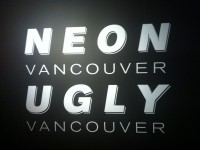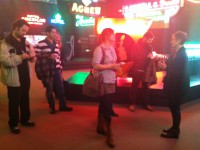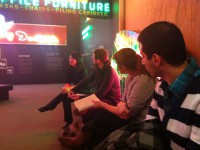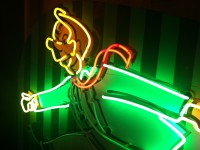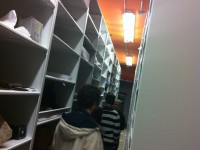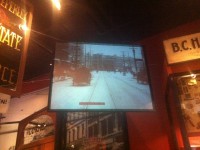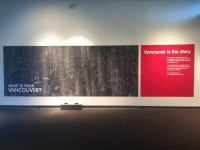Objects in the Age of their Digital Reproducibility
Walter Benjamin’s influential essay on the work of art in the age of “its technological reproducibility”, argues that, while art has always been theoretically reproducible, the “here and now of the original”, its “authenticity”, its “aura” and its “unique existence”, are obliterated with “mechanical reproduction”. Yet Benjamin also notes that mechanical reproduction enables new kinds of “existences” and encounters, as well as new kinds of human perceptions:
“First, technological reproduction is more independent of the original than is manual reproduction. For example, in photography technological reproduction can bring out aspects of the original that are accessible only to the lens . . . but not to the human eye; or it can use certain processes, such as enlargement or slow motion, to record images which escape natural optics altogether . . . Second, technological reproduction can place the copy of the original in situations to which the original itself cannot attain. Above all, it enables the original to meet the recipient halfway, whether in the form of a photograph or in that of a gramophone record.” (Benjamin 2010, 14 [my emphasis])
For Benjamin, these qualities, while novel, were destructive, involving the “liquidation of the value of tradition”, substituting a “mass existence for a unique existence”, and potential weapons for political powers (Benjamin 2010, 14; 35). Yet these new qualities of mechanical reproduction, here relating to photography and film, were also used as productive elements in early filmic experiments. Vertov’s Man with a Movie Camera is one example:
In the midst of a scene showing the group in the motorcar, Vertov shows stills of the action, close-ups of people’s faces, reels of negatives and their contents, as well as the process of piecing reels together to create the film itself. Details of things and behaviors in the world, and the process of image-making itself, are revealed by cinematic techniques. As Benjamin writes, “It is through the camera that we first discover the optical unconscious” (2010, 30).
Today, Benjamin’s observations about 1) how new technologies (both positively and negatively) transform collective perceptions and 2) the various ways new technologies both conceal their histories and (re-)production and reveal otherwise unseen or “unconscious” elements in the world are echoed in much of the literature surrounding new digital technologies.
1) On Shifts in Collective Perception
Jeff Malpas’s chapter in New Heritage, following Benjamin, argues that peoples’ perceptions are being further detached from the real (both material and in space/place/time), which in turn changes the way “we understand, experience, and interpret ourselves” (Malpas 2008, 19). In a different vein, Gwyneira Isaac’s paper on the ways new media has become the new museum object shows how new technologies have changed the experience of viewing in museums: “The interplay between . . . digital images and their material referents, has initiated new ways of responding to and experiencing museum objects” (Isaac 2008, 297). Likewise, in Srinivasan et al’s (2010) paper on the digital museum as ‘contact zone’, the attachment of narratives, originating contexts, and diverse knowledges to the audience encounter with an object activates more complex understandings of objects’ meaning.
2) On the Concealing or Revealing of Objects’ Qualities & Contexts
Malpas’ paper also sticks with Benjamin on the topic of objects’ contexts. Malpas argues that digital technologies “dissolve the presence of the thing in its place” (2008, 19). A quality of digital technologies is “not only their capacity for endless reproduction . . . but also their capacity to transform the elements that they reproduce, to produce new such elements, and to juxtapose those elements in new arrangements and forms of connection” (Malpas 2008, 20). His final call to action—to find “ways to deploy new media in ways that maintain, and do not obscure or dissolve, a sense of place” (2008, 26)—is in many ways answered by papers by Srinivasan et. al. and Kimberly Christen (2011). In Srinivas et. al’s perspective, digital technologies’ juxtapositions and digital objects’ “extensionality” and “mutability” in fact reveal “cultural threads” and narratives. Contemporary digital heritage projects like the Museum of Anthropology’s Reciprocal Research Network (Rowley 2010) and the Plateau Peoples’ Web Portal (Christen 2011) illustrate the ways digital objects can be seen in the context of “the processes and relationships that ground information systems within larger cultural logics and historical events” (Christen 2011, 190) as well as otherwise distant peoples, places, and other things, while maintaining “cultural protocols aimed at maintaining specific types of knowledge” (Christen 2011, 191).
At the same time, Isaac also notes that in digital reproduction, the “copying” of complex codes becomes another form of “technological enchantment”, using Alfred Gell’s terminology. Like the notion of Benjamin’s “aura”, Gell’s notion of “enchantment” involves the idea that a thing is produced in an irreproducible moment of human creativity. When symbols and numbers are copied and reformatted “’the numbers are read and inscribed anew each time’ . . . so that ‘each copy . .. is still an “original” inscription of information’” (Isaac citing Binkley 1997). However, unlike a painter envying another painter’s piece, I wonder whether code experts are equally “enchanted” by these technologies.
So, what are the impacts of new digital technologies on ‘objects’ and our engagements with them? Responses to this question, as with Benjamin’s generation, teeter between fear and optimism. At the same time that new technologies release objects from their original contexts or moments of human creation, they have a potential to enable new productive connections, juxtapositions and encounters that reveal otherwise obscured networks they are a part of or layered knowledges embedded in them.
A Few Questions:
-How are digital technologies changing perceptions or practices of engaging with objects? If digital media are themselves new kinds of objects, as Isaac argues, are there differences between physical objects and digital objects? And what are they?
-How do digital technologies obscure or reveal cultural practices, traditions and histories? Is restricting kinds of access enough to ensure that cultural values are maintained?
-What are the exciting and/or dangerous potentialities for the new contexts and connections digital objects encounter? Can audiences still “misread” objects from their own contexts or worldviews?
-Returning to our discussion last week, why do we feel uneasy when we think of the computerized reproduction of a carving, but perhaps not of a photograph? What qualities of human production are still held sacred?
These were some streams and questions I found interesting, but I’d be interested in other ways you engaged with this topic!
Cited:
Benjamin, W. 2010. “The Work of Art in the Age of Its Technological Reproducability” [First Version]. Grey Room 39, pp. 11-37.
Christen, K. 2011. “Opening Archives: Respectful Repatriation. American Archivist 74, pp. 185-210.
Isaac, G. 2008. “Technology Becomes the Object: The Use of Electronic Media at the National Museum of the American Indian. Journal of Material Culture 13(3), pp. 287-310.
Malpas, J. 2008. “Cultural Heritage in the Age of New Media” in New Heritage. New York: Routledge, pp. 13-26.
Srinivasan, R. et al. 2010. “Diverse Knowledges and Contact Zones within the Digital Museum. Science, Technology & Human Values 35(5), pp. 735-768.
Rowley, S. et al. 2010 “Building an On-Line Research Community: The Reciprocal Research Network”, www.museumsandtheweb.com/mw2010/papers/rowley/rowley.html.



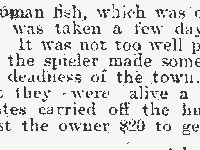
 I just came home from an excellent workshop at the Smithsonian’s National Museum of Natural History called “
I just came home from an excellent workshop at the Smithsonian’s National Museum of Natural History called “